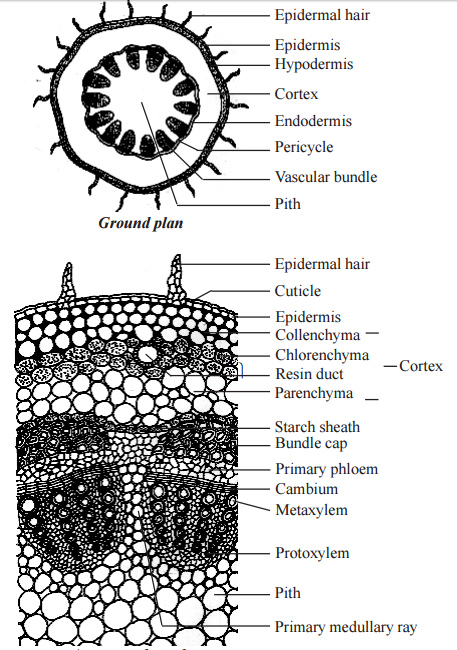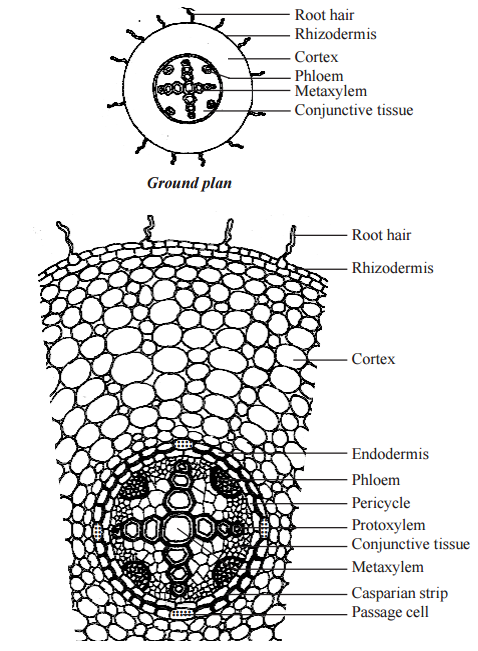Crossing over, gene mapping and recombination of chromosome
Crossing over, gene mapping and recombination of chromosome are explained in detail.
Crossing over
The process, which produces recombination of genes by interchanging the corresponding segments between nonsister chromatids of homologous chromosomes, is called crossing over.
A crossing over between linked genes allows their recombination during meiosis.
Crossing over takes place in pachytene stage of prophase I of meiosis.
In pachytene stage, the bivalent chromosome becomes tetrad i.e. with four chromatids.
The adjacent nonsister chromatids are joined together at certain points called chiasmata.
Crossing over occurs between the nonsister chromatids of paired chromosomes in the region of chiasma.
At each chiasma, the two nonsister chromatids break, exchange their segments and rejoin resulting the crossing over.


Hence, out of four chromatids the two adjacent chromatids are recombinants and other two are original chromatids.
Thus four types of gametes are obtained.
Significance of crossing over
Crossing over leads to the production of new combination of genes and provides basis for obtaining new varieties of plants.
It plays an important role in the process of evolution.
The crossing over frequency help n the construction of genetic maps of the chromosomes.
It gives us the evidence for linear arrangement of linked genes in a chromosome.
Gene mapping
Genes are arranged linearly in a chromosome. The point in a chromosome where the gene is located is called locus.
The diagrammatic representation of location and arrangement of genes and relative distance between linked genes of a chromosome is called linkage or genetic map.
The unit of genetic map is Morgan or centimorgan.
When the percentage of crossing over between two linked genes is 1 per cent, then the map distance between the linked genes is one morgan.
There is a greater probability of occurrence of crossing over, when the two genes are farther apart in a chromatid.
The probability of crossing over between two genes is directly proportional to the distance between them.
When two genes are nearer, the probability of occurrence of crossing over between them is limited.
Let A, B, C, D and E be five knots on a string separated by the distances as shown.
The probability of making a random cut between two knots is directly proportional to the distance between them.
Every cut separates A from E, whereas 5/100t1, cut only separates C from D.
If the knots or genes linearly arranged on a chromosome in randoms are the cross overs, then C and D remain linked, whereas A and E will not show linkage in this situation.
Uses of gene mapping
It is useful to determine the location, arrangement and linkage of genes in a chromosome.
It is useful to predict the results of dihybrid and trihybrid crosses.
Recombination of chromosome
The process, which produces recombinations of gene by interchanging of corresponding segments between nonsister chromatids of homologous chromosomes, is called recombination of chromosomes.
It takes place in pachytene stage of prophase I of meiosis. Crossing between the linked genes results in genetic recombination.
According to Bateson and Punnet, in Lathyrus odoratus 12 per cent of the test cross progeny were recombinants.
Recombination between two genes is expressed in percentage. It is called recombination frequency.
Gene pairs that had very low percentage of recombination are known as tightly linked genes.
The gene pairs with higher percentage are termed as loosely linked genes.
For example, 12 per cent of the test cross progeny were recombinants.
They showed a different linkage of alleles than their parents.
The percentage recombination is determined by dividing the number of recombinant offspring by the total number of offspring.
In the figure 3.4, the linkages of the parents were B with L and b with l.
The recombinant offspring are B with l or b with L.
For more detail about cross over click here
Other links
STRUCTURE OF CHROMOSOME – CELL BIOLOGY
Types of chromosomes with special types
Linkage and mechanism of linkage
Mutation and classification of mutation
Mutagenic agents and its significance
Structural Chromosomal aberrations
Numerical chromosomal aberrations
Structure of DNA and Function of DNA





















